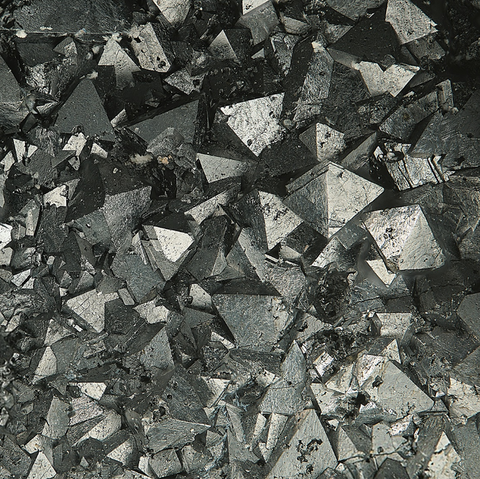BRAUNITE
Class : Silicates
Subclass : Nesosilicates
Crystal system : Tetragonal
Chemistry : Mn7SiO12
Rarity : Common
Braunite is a notable component of large sedimentary manganese deposits (India, South Africa, etc.), especially abundant when they have undergone slight metamorphism. It is associated with a procession of manganese oxides and hydroxides (manganite, pyrolusite, psilomelane). This manganese silicate is also found in manganiferous contact deposits and in hydrothermal veins. It owes its name to Kammerrath Braun who provided the type sample. Braunite forms small, almost regular octahedra, exceptionally reaching 5 cm, often with striated truncations. In manganese deposits, it more often occurs in grainy masses made up of myriads of microscopic patches. It is a dark, brownish-black to steel-grey mineral with a strong metallic luster. It is an important manganese ore.
Main photo : Braunite on amphibole from Caspar Quarry, Ettringen, Germany © Volker Betz
Braunite in the World
Twinning
A twin is known on {112}, producing a small re-entrant angle on {011}.
Fakes and treatments
No fake inventories for this mineral species.
Hardness : 6 to 6.5
Density : 4.72 to 4.83
Fracture : Irregular
Trace : Brown-black, gray
TP : Opaque
RI : -
Birefringence : -
Optical character : -
Pleochroism : None
Fluorescence : None
Solubility : Hydrochloric acid
Magnetism : None
Radioactivity : None





